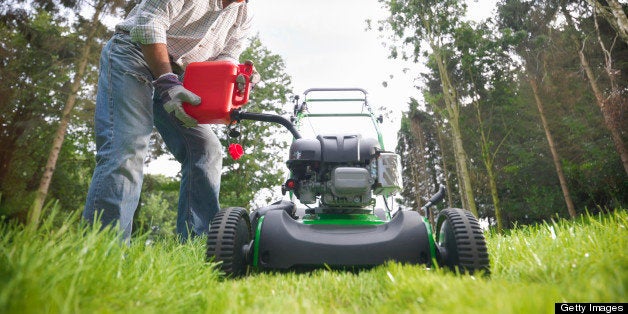
Many homeowners strive for the perfect, emerald-green lawn, which often means that their lawn mower suffers considerable use and abuse. And without regular, preventive maintenance, there's a good chance an overworked lawn mower will sputter out just when you need it most.
Sure, you can pay $50 to $75 for a tune-up, but if you're willing to invest a little sweat equity, it's not too difficult to do it yourself. Just follow these step-by-step directions for tuning up a lawn mower.
To get started, you'll need a socket wrench, spark plug wrench, screwdriver, locking pliers, drain pan, work gloves, air filter, spark plug, motor oil and gasoline.
1. Disconnect the spark plug
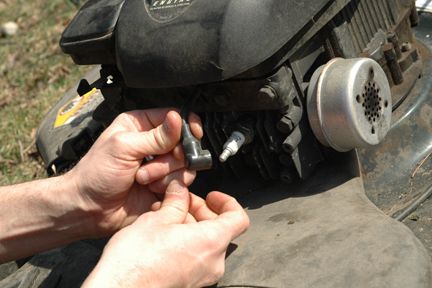
Always disconnect the spark plug before starting work on your lawn mower. It's a necessary safety feature because you'll be touching the mower blade. When the spark plug is disconnected, the mower can't accidentally start. Simply locate the spark plug wire and use your hands to disconnect the rubber boot.
2. Drain engine oil
Check your owner's manual to see how to drain the oil from your lawn mower. If you don't have the manual, search online using your mower's make and model.
For most push mowers, you can drain the oil by removing the drain plug located in the undercarriage, or by tilting the mower on its side and draining it out through the oil fill tube.
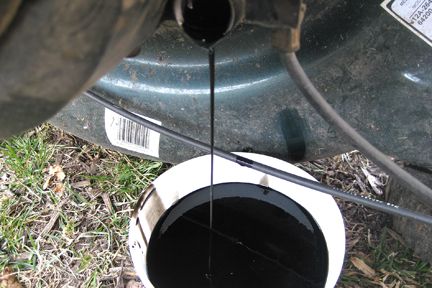
If you have a drain plug: Tilt the mower back, loosen the plug with a socket wrench and then use your hands to remove it. Have a drain pan ready because oil will pour out as soon as you remove the plug.
To drain oil out through the fill tube: Remove the dipstick and carefully pour the oil into your drain pan. Make sure to tilt the mower on the side closest to the fill tube so you don't spill oil on other parts of the mower.
Don't pour the used oil into the garbage or down the drain. Many auto body shops will dispose of used motor oil, but you might have to pay a small fee.
3. Replace the air filter
Air filters routinely get clogged with oil and debris, so replacing your filter before each mowing season will help protect the mower's engine and ensure it runs optimally.
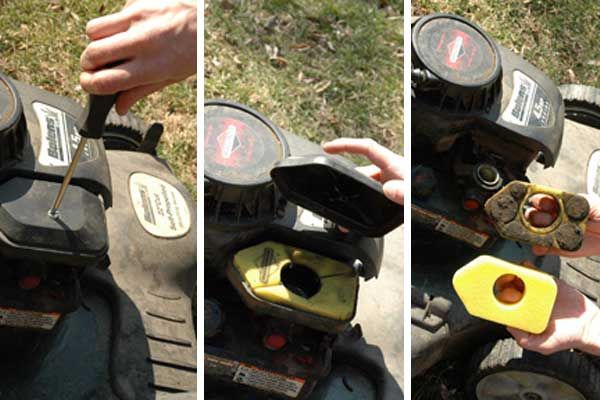
To replace the air filter, use a screwdriver to remove the air filter cover. Your mower should have a paper or foam air filter. All you need to do is remove the old filter and insert the new one. If it's a paper filter, make sure the pleated side faces out. Reattach the air filter cover with your screwdriver and wipe it clean.
Air filter cost: $5 to $10
4. Change the spark plug
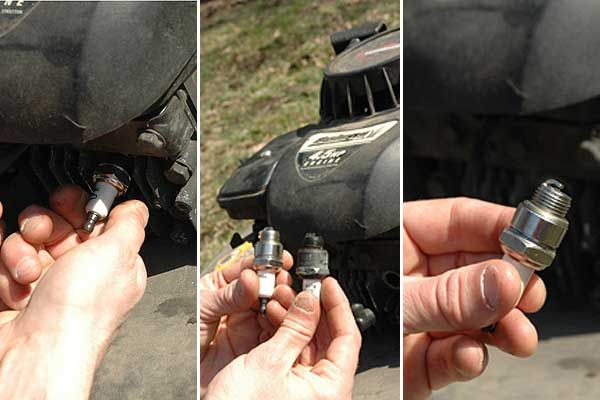
Use a spark plug wrench to loosen the plug before manually removing it.
You'll notice the spark plug has an electrode and overhanging arm on the end that inserts into the mower. Make sure the new spark plug has a gap because if the arm touches the electrode, it will prevent a spark and your mower won't start.
Insert and tighten the new spark plug with your hands. Use the spark plug wrench to give it one more turn. Use caution as you tighten so you don't damage the spark plug's porcelain tip.
Spark plug cost: $3 to $6
5. Sharpen the blade
You can sharpen the blade with a metal file or bench grinder, or have a pro do it at a lawn mower repair shop.
Regardless of the method you choose, you'll need to remove the blade. Tilt the mower on its side and use locking pliers to prevent the blade from slipping. Then, use a socket wrench to unscrew the bolt that holds the blade in place. Wear a pair of work gloves to prevent cutting your hand while touching the blade.
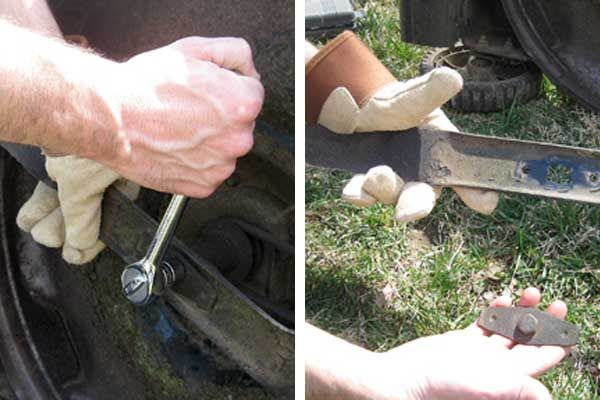
To address minor wear and tear, clamp the blade in a vice and run a metal file along the cutting edge. For more damaged blades, you'll need to use a bench grinder. If you don't have a bench grinder or you're unsure how to use one, take the blade to a repair shop and let a pro sharpen it.
Cost to sharpen a lawn mower blade: $10 to $20
6. Replace oil and gas
Before adding oil, make sure the drain plug is inserted. Many push lawn mowers use SAE 10W-30 oil. Use a funnel as you pour and check levels with your dipstick. Motor oil cost: $3
You should always use fresh gasoline because it loses volatility over time and can make it hard to start your lawn mower.
7. Reconnect the spark plug wire
The final step in your DIY lawn mower tune-up is to reattach the spark plug wire. Do this only after you're certain that the others tasks are complete and you're ready to start landscaping.
DIY vs. professional lawn mower tune-up
It can cost less than $30 to tune up your lawn mower. Obviously, it's cheaper to do it yourself, but you also need to factor in the time it takes to do the work and obtain parts and supplies -- and whether it's something you actually want to do.